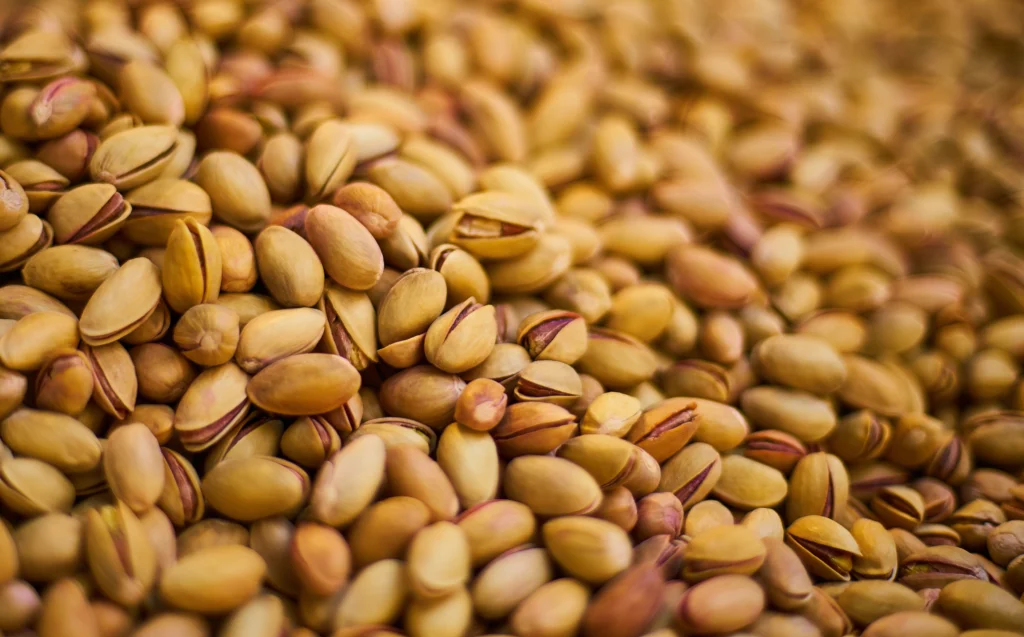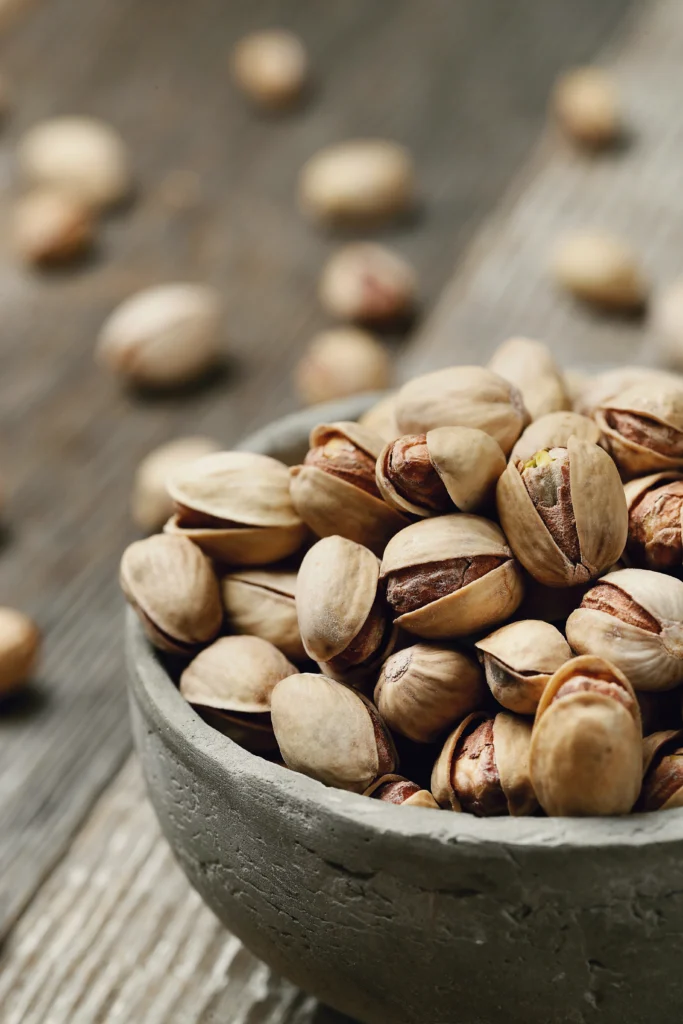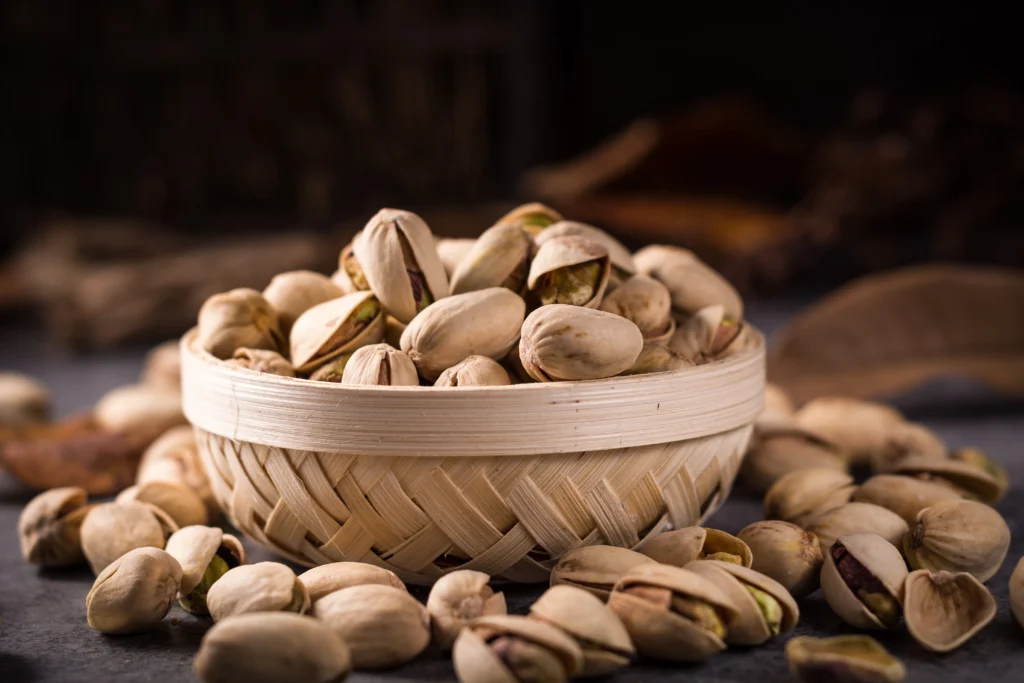Pistachios, often referred to as the “green gems,” are one of the most beloved nuts around the world. With their rich history, exceptional nutritional profile, and diverse culinary applications, they are more than just a snack. In this comprehensive guide, we’ll explore everything you need to know about pistachios: their history, benefits, uses, and much more.

A Brief History of Pistachios
Pistachios have been enjoyed for thousands of years. Archaeological evidence dates their consumption back to 6750 BCE in the Middle East. The trees were initially cultivated in Persia and soon spread to Mediterranean regions, becoming a symbol of royalty and wealth. Eventually, Romans introduced pistachios to Europe, and they quickly became a staple in European and Mediterranean cuisines.
The modern cultivation of pistachios in the United States began in the early 20th century. By the 1970s, California emerged as a leading producer. Today, alongside Iran and Turkey, the U.S. dominates global production, accounting for 88% of total output, as reported by FAO Global Pistachio Production Data.
What Makes Pistachios Unique?
Pistachios are not just any nut. They are the seeds of the Pistacia vera tree, which thrives in arid climates and saline soils. This resilience makes them an ideal crop for challenging environmental conditions, including long, hot summers and minimal rainfall. Moreover, their vibrant appearance and rich flavor add to their appeal.
Interesting Facts About Pistachios
- Colorful Interior: The vibrant green and purple hues come from antioxidants like lutein and anthocyanins.
- Audible Harvest: As pistachios ripen, their shells split open with a characteristic popping sound.
- Centuries-Old Trees: A single pistachio tree can live for over 300 years, producing fruit for most of its lifespan.
Nutritional Powerhouse
Packed with essential nutrients, pistachios are a go-to choice for health-conscious individuals. Here’s a breakdown of their nutritional profile per 100 grams:
- Calories: 562
- Protein: 20.2 g
- Fiber: 10.6 g
- Healthy Fats: 44 g (mainly monounsaturated and polyunsaturated fats)
- Vitamins: Rich in Vitamin B6, thiamin, and Vitamin E
- Minerals: High in potassium, magnesium, and phosphorus
Health Benefits of Pistachios
1. Heart Health
Pistachios are excellent for cardiovascular health. The high levels of monounsaturated fats, combined with antioxidants, help reduce LDL (bad cholesterol) while boosting HDL (good cholesterol). Furthermore, the FDA’s qualified health claim supports the heart benefits of nuts, including pistachios.
2. Weight Management
Despite being calorie-dense, pistachios can aid in weight management. Their combination of protein, fiber, and healthy fats promotes satiety, helping you eat less overall.
3. Blood Sugar Regulation
Thanks to their low glycemic index, they are a diabetic-friendly snack. They help stabilize blood sugar levels when eaten as part of a balanced diet.
4. Rich in Antioxidants
Pistachios contain lutein, zeaxanthin, and polyphenols, which protect cells from oxidative damage. These antioxidants are also beneficial for eye health, reducing the risk of macular degeneration.
5. Gut Health
High fiber content makes pistachios an excellent choice for improving gut health. They promote the growth of beneficial bacteria like Lactobacillus and Bifidobacterium.
Culinary Uses of Pistachios
The culinary versatility of pistachios is unmatched. From savory dishes to sweet desserts, they add flavor, texture, and visual appeal. As a result, they have become a favorite ingredient for chefs and home cooks alike.
In Desserts
- Pistachios are a key ingredient in Middle Eastern desserts like baklava and Turkish delight.
- They are widely used in ice creams, cookies, and cakes. For inspiration, try incorporating them into your baking like in this Pumpkin Banana Loaf.
In Savory Dishes
- Use crushed these seeds as a topping for grilled meats and seafood.
- Blend them into pestos or sauces for a nutty twist.
Snacks and Beverages
- Enjoy roasted and salted them as a healthy snack.
- They can also be used to make them butter or milk for a dairy-free alternative.
For more creative ideas, explore how pistachios can be swapped into classic recipes like these Muddy Buddies.

Challenges in Pistachio Cultivation
Growing these seeds is no easy task. The trees are biennial, meaning they produce a heavy harvest only every other year. Additionally, they require:
- Hot, Dry Climates: Long summers are essential for proper ripening.
- Low Humidity: Excess moisture can lead to root rot and fungal infections.
Common Pests and Diseases
- Botryosphaeria Blight: This fungal disease can destroy entire orchards.
- Aflatoxins: Improperly stored they are at risk of mold contamination, making them unsafe for consumption.
Sustainability and Environmental Impact
One of the remarkable features of these seeds is their environmental resilience. They require less water compared to almonds, making them a more sustainable choice for arid regions. However, climate change poses challenges, such as rising temperatures and water scarcity. To address these issues, farmers are adopting innovative practices like mechanized harvesting and precision irrigation, as discussed in Sustainable Farming Methods for Pistachios.
Frequently Asked Questions About Pistachios
1. Why are some of these seeds dyed red or green?
In the past, they were dyed to hide blemishes caused during hand-picking. Today, most of them are machine-harvested and left natural.
2. Are pistachios a nut or a seed?
Botanically, they are seeds. However, they are classified as culinary nuts due to their usage in cooking and snacks.
3. How long does it take for a pistachio tree to bear fruit?
A pistachio tree takes 7–10 years to produce significant yields, with peak production achieved around 20 years.
4. Are pistachios good for weight loss?
Yes! Thanks to their fiber, protein, and healthy fats, pistachios promote satiety, making them an ideal snack for weight management.
Fun Ways to Enjoy Pistachios
Looking for new ways to incorporate pistachios into your meals? Here are a few ideas:
- Sprinkle chopped these seeds on yogurt or oatmeal.
- Add them to a trail mix with dried fruits and dark chocolate.
- Use them to garnish your favorite cookies, like Earl Grey Cookies.

The Future of Pistachios
With their growing popularity and sustainability, the future of these seeds looks bright. Farmers are leveraging advanced agricultural technologies like AI-powered irrigation systems and drone monitoring to maximize yield and efficiency. Expanding markets in Asia and Europe further highlight the global demand for this versatile superfood. As more consumers embrace plant-based diets, they are sure to remain a favorite snack and ingredient.
Conclusion
Pistachios are more than just a snack—they’re a nutritional powerhouse, a versatile culinary ingredient, and a sustainable agricultural product. Whether you enjoy them in desserts, savory dishes, or as a standalone treat, pistachios bring a unique blend of health benefits and flavor. For more ideas and recipes featuring nuts, visit Elina Recipes, where you’ll find inspiration to elevate your culinary creations.
